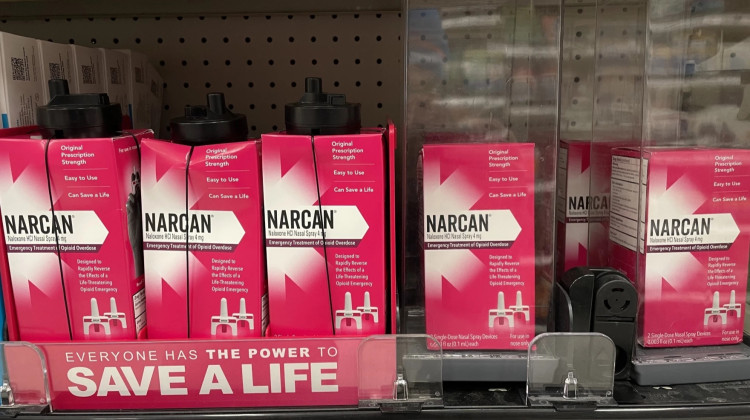
A new map tracks where and how frequently emergency responders administer naloxone, the opioid overdose antidote.
Lauren Chapman/IPB NewsState and local groups working to address opioid addiction have a new tool. The state unveiled the Naloxone Administration Heatmap Thursday that updates each time time emergency responders administer the opioid overdose antidote, naloxone.
The online, interactive map, created in a partnership through the Indiana Department of Homeland Security and the Indiana Management Performance Hub, illustrates locational patterns in overdoses.
Indiana Department of Homeland Security EMS Medical Director Michael Kaufmann says often, when talking about opioids, the focus is on overdose deaths.
“It highlights lives saved. The vast majority of time when EMS responds and naloxone is given, its in the effort to save a life,” Kaufmann says. “And most of the time they’re successful at doing that.”
Now, Kaufmann says, that data is available for state and local groups across the state.
“Use this data to see where we’re seeing increased densities of overdoses occurring, and then be proactive,” Kaufmann says. “Whether it be through a state agency, through a faith-based organization, or even a local grassroots community kind of effort to combat the opioid problem.”
The map was tested through a pilot program with Indianapolis, Muncie, Columbus, Richmond and Evansville.
 DONATE
DONATE







 Support WFYI. We can't do it without you.
Support WFYI. We can't do it without you.